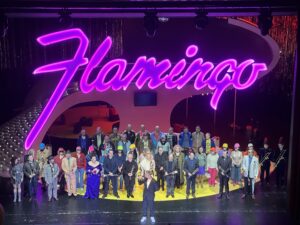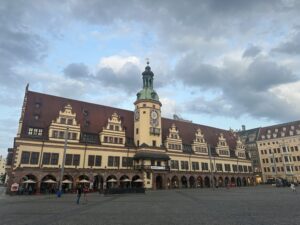I felt like our final concert at the Alte Börse was quite a good way to wrap up the program, and I had a great time preparing for it! I wanted to just share some final thoughts and takeaways on each of the pieces I performed in, as I feel like I gained a lot of experience throughout the process.
Vocal pieces – “Jesus bleibet meine Freunde” and “O große Lieb”
These pieces were especially fun to play because I have never had the opportunity to play with singers in a setting like this before. It forced me to listen more closely so as to blend properly with the vocalists, and really control my sound in order to accompany well while still playing out a bit when they had rests to make the piece sound balanced. I also thought it was interesting going through and having the instrumentalists sing as well during preparation, as it made it much easier to accompany the singers knowing how it felt to be in their position. It also helped me internalize the music better, and knowing what the words meant was useful for developing the expression of the pieces. Generally I thought having these pieces to open and end the concert was a very fitting way to cap off our exploration of Bach!
Viola duets – J.S. Bach Invention No. 1 and W.F. Bach Duet for Two Violas in C Major
Starting with the invention, I thought this piece was a wonderful little introduction to the world of Bach for me, since I have played very little of his music before. It’s not especially long or difficult, but actually contains a good amount of nuance that was fun to work through. I felt like I learned a lot about phrasing and expression in a Baroque context through this piece. Initially the very systematic wall of sixteenth notes seemed intimidating and monotone, but once we had some familiarity with the piece I began to see ways to shape it creatively and add expression. Working with Vito on this was great as well, as I was able to learn about Baroque stylistic and performance tendencies both through his preexisting knowledge of them and by working through our pieces. This was extremely helpful in both duets, and I feel like by playing them I have gained greater insight into how Baroque music really works. For the W.F. Bach duet, we ended up playing the first and second movements of the duet in C major (although we played the second movement first!). This piece was also quite interesting, as I knew very little about W.F. Bach and, as I was excited to learn, it was originally composed for two violas! I enjoyed this one quite a bit, as the viola parts were very interlocked and imitative, so it was a fun challenge to get the balance right and make sure the melody was always audible at a given time. I was also able to work on expression in a Baroque context as with the invention, but this duet also contained a few more accompanying sections and contrasts in mood which allowed a wider range of expressive nuances.
Overall, I thought the concert went well and it was a great experience getting to know Bach in the city where he spent so much of his life!


